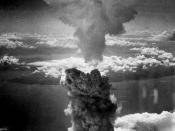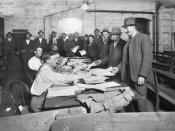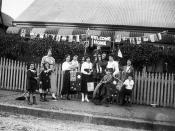In both World War I and World War II, Americans on the homefront had to make sacrifices for their boys overseas. The cost of war is great-which led to economic problems such as inflation. All Americans were encouraged to do their part in winning the war-which could be anything from building airplanes, working at a steel mill, growing a "victory garden", or actually going over to Europe and fighting. Homefront economic conditions during World War I and World War II were very similar to each other because during both wars the government raised taxes, organized scientists to be a part of the war effort, and created organizations to help the country's economy.
Changes in the economy were perhaps one of the greatest effects World War I had upon America. In some industries, especially metal trades, shipbuilding, and meatpacking, benefited from the war. As a matter of fact, wages in those factories and companies rose by as much as 20%.
However, the people involved in white-collar business lost a lot of purchasing power. Their lose of purchasing power led to inflation. Not only did America have to deal with inflation, but it also had to pay off the war cost-which totaled up to $33 billion. The government sold war bonds to try to get some of the money America needed, but this was not enough. Therefore, it raised the income taxes and put an extra tax on certain luxury items such as tobacco. This was a more successful attempt at paying the cost of the war; taxes paid about one third of the war cost. While the American economy was slowly deteriorating, President Wilson quickly established the National War Labor Board to encourage people to keep working. He also created the Food Administration to help produce and conserve food. There...


